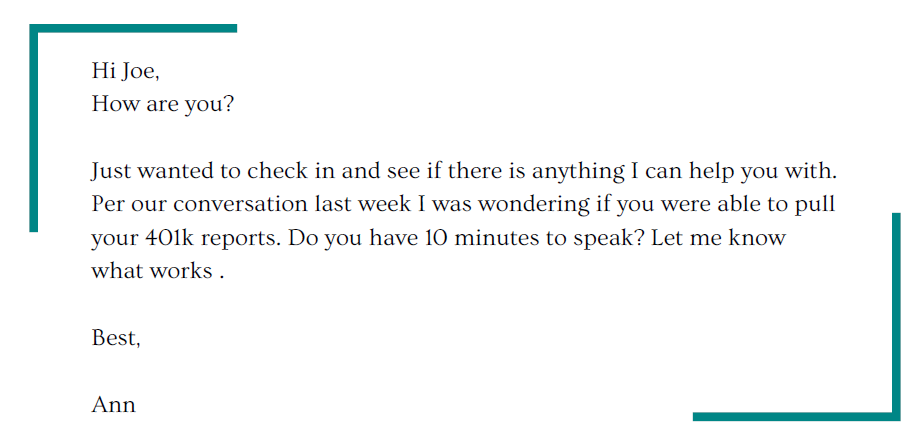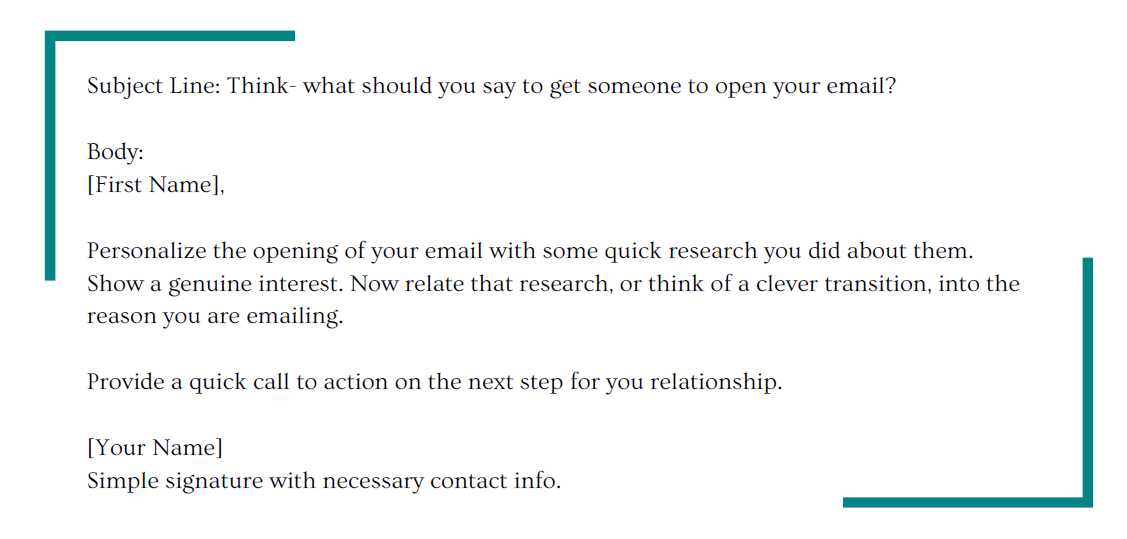5 Reasons Prospects are Ignoring your Emails
Prospective client relationships can be nurtured in a variety of ways: in person, on the phone, on your website, through your staff, through the mail, and with email. If you are like most advisors, as you grow you begin to realize that relying on manual one-to-one communications is simply not scalable. The best way to stay in front of prospects is to use automated tools in parallel with a more focused and strategic use of personal contact. The simplest and least expensive tool is email.
The problem is most advisors are great with numbers, but not great at writing effective emails. If you Google "common email mistakes" you will find endless references but they all say the same thing; you should include a first name in the email, avoid using business jargon, do not say "whom it may concern," spellcheck your work, and the list goes on.
All of these are common sense suggestions for the beginner email user. What are the mistakes you are not seeing, that are not obvious, that prevent from eliciting a response? This whitepaper will help you answer that question, we will review actual best practices your emails should follow.
Mistake #1:
Your Subject Line Does Not Reflect Your Goal
It is no secret that an effective subject line is needed to ultimately get an email opened. When writing your subject lines, think about your true end-goal. The immediate goal of any email you send should simply be about getting a response. It should not be about closing a prospect/sale or getting a referral. Until you can get a response on your email, until you truly connect with a prospect, you are nowhere closer to achieving your end-goal.
Here are some example subject lines we have seen work to get a prospect's attention:
1) [First Name], quick question for you
2) [Mutual connection] recommended I get in touch
3) Ideas for [what is important to them]
4) Questions about [recent trigger event]
5) Question about [a goal they have]
6) Have you considered [thought/recommendation]?
Mistake #2:
Sending Emails at the Wrong Time
Most business emails are sent during business hours. But recent data from the 2014 Email Open Rates Report shows something slightly surprising. The report shows that although most emails were sent on Monday (over 1,000,000) and Tuesday, those were the worst days for open rates. The report shows the open rates gradually increasing over the course of the week, spiking on Saturday and Sunday.
Now, we are not saying to alter your strategy by sending all emails on the weekend. However, there should be some strategic balance. If you really want to capture the attention of someone important, who is not getting back to you, try a weekend email. Otherwise, stick to your normal business hours.
Mistake #3:
Using a Generic Sender Address
The name you include in the "From" field of your email can have a huge impact on your overall open rates. There have been a number of studies that show sending emails from an actual person increases both the open and click-through rates. It makes sense - prospects and clients feel a more personal connection to your email when they receive it from "James Smith" than they do from "Company X," or worse, some version of the "donotreply.com."
Mistake #4:
Sending a "Just Checking In" Email When a Prospect Has Gone Cold
We have all hit a stage in where we just really need a response. For example, in the case of a prospect/ product you really want to land, or a product you really need to sell, but the prospect just is not getting back to you. In these desperate times, many resort to sending an email like the following:  This email example displays some "worst practices" you need to avoid completely. By using a generic opening with no personalization to your relationship with the prospect. You admit you are checking-in for the sake of checking-in (you have no real value to add). Your email is asking the prospect for information rather than giving information.
This email example displays some "worst practices" you need to avoid completely. By using a generic opening with no personalization to your relationship with the prospect. You admit you are checking-in for the sake of checking-in (you have no real value to add). Your email is asking the prospect for information rather than giving information.
Mistake #5:
Ending an Email Without an East Next Step
You already know your email should have an end-goal. You also need to ensure your email ends with a goal that's clearly in mind for your prospect. Whether it is downloading a piece of content, scheduling a time to connect, or sharing information, every end-goal needs to be clearly and strategically stated so the prospect can easily understand and execute the next step.
Let's say the goal is time to connect. Many best practices suggest finding an open spot on your calendar and recommending a few. This is may look like, "Are you free to chat for ten minutes at 10 am, 2 pm, or 5 pm on Monday or Tuesday?"
Here is the problem with this approach - what if the recipient is not available at those times? The better option is to include a link to a calendar sharing application like TimeTrade and ask the prospect to pick a time on your calendar that would work for them.
Remember, the main goal of the email is to get a response. This approach makes it easy because:
1) The Answer is simple - it is either yes or no.
2) The light "ask" for ten minutes shows you are not asking too much.
3) It is clear what the recipient has to do to show interest in engaging with you
Conclusion:
We would like to leave you with this template that walks you through writing your emails with our suggestions in mind.  As you begin using these techniques, you will uncover more which will benefit your specific needs. The most important part is you will start to see prospects respond to your emails. Download the Printable Version
As you begin using these techniques, you will uncover more which will benefit your specific needs. The most important part is you will start to see prospects respond to your emails. Download the Printable Version

